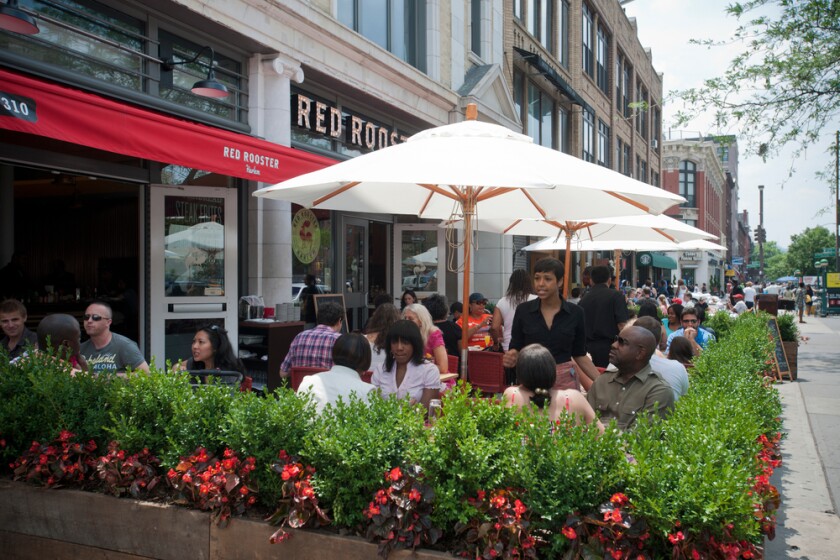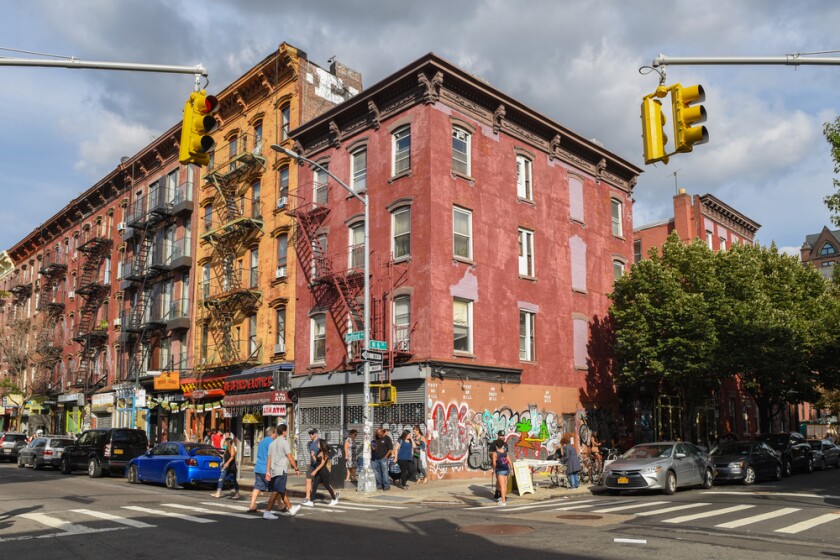That act of destruction horrified not only New York but much of America as well. It helped the National Trust for Historic Preservation, which had been around since 1949, to grow into a powerful pressure group and lobbying force all over the United States. Very quickly, the National Trust broadened its focus from venerable individual buildings to entire neighborhoods, and succeeded in protecting a good many of them. By 2022, there were more than 2,300 historic districts spread across every state.
And for much of its period of expansion, the preservation movement amounted to a consensus political favorite. Arguments challenging it were generally regarded as the product of fringe agitators with little mainstream support.
In the past decade, though, the movement has lost some of its unimpeachable reputation and been beset by more sophisticated arguments that it was dictating the physical character and retarding the evolution of large swaths of urban America. The anti-preservation movement is now highly vocal and well funded. Some of its advocates are linked to the Stand Together Foundation, founded and bankrolled by the Koch family fortune, a conservative philanthropic organization, many of whose acolytes continue to see historic preservation as a threat to precious individual freedoms.
The most important of those advocates is Adam Millsap, a Stand Together senior fellow who won much of his reputation in conservative circles with a 2019 article in Forbes entitled “Historic Designations Are Ruining Cities.” In that article, Millsap called historic preservation a “way for government-empowered preservationists to obstruct new development.”
Millsap cited several well documented episodes that he considered historic-preservation horror stories. An effort in San Francisco to convert a laundromat into an eight-story apartment building was stalled for eight years while city officials sought to determine if the laundromat was protected by historic significance. In Denver, he reported, preservationists delayed the conversion of a 1960s diner into a new mixed-use retail/residential development.
“Today, in cities around the country,” Millsap wrote, “entire neighborhoods of marginal historical value are frozen in time, hindering the ability of cities and their residents to adjust to their built environments in response to changing economic circumstances.”
Some less strident urban scholars have come to treat historic neighborhood preservation as a stalking horse for gentrification and the displacement of impoverished residents. Igor Vojnovic, a Michigan State University professor and co-author of a 2019 study of preservation, concluded that “as neighborhoods appealing to different incomes are upgraded, cities can become ubiquitously unaffordable.” He and his co-author, Ted Grevstad-Nordbrock of Iowa State University, cautioned that high investments in historical restoration of an area come with a cost to both its current and future residents.
In general, the critics argue that preservation blocks the creation of affordable housing and the increased density that central cities nearly all need, while preventing individual homeowners from making improvements to their property that should be a fundamental owner’s prerogative.
BUT WHILE THE ANTI-PRESERVATION MOVEMENT warns against gentrification, an equally intense set of advocates has been working steadily to refute the criticisms. This effort is centered in an organization called PlaceEconomics, led by longtime retail development guru Donovan Rypkema. In 2020, this group issued a detailed manifesto called “Twenty-Four Reasons Historic Preservation Is Good for Your Community.” Some of the arguments are more persuasive than others, but taken as a whole the paper makes a credible case that preservation’s opponents are ignoring some critical facts.
The PlaceEconomics authors argue, for example, that preservation neighborhoods are magnets for the small businesses that have become an endangered species in many cities over the past decade and especially in the aftermath of the COVID-19 pandemic. They note that these neighborhoods have also become magnets for tourism, and that preservation tourists stay longer and spend more than other kinds of visitors. They point out that the rate of foreclosure in historic districts has been far lower than in other areas of almost any American city.
They do concede that high-demand preservation neighborhoods bring homeowners higher property taxes, but demonstrate that these increases are dwarfed by the often-soaring market value of the buildings. One might argue that a homeowner who has no intention of selling out and moving in the foreseeable future derives little short-term benefit from higher resale prices. But the point is well taken nevertheless.
There is a further misconception about preservation that has been documented by a number of academic studies. This is the idea that preservation and gentrification tend to strike hardest at older neighborhoods inhabited by the poor and minorities. More typically, as sociologist Robert Sampson and others have pointed out, the most likely gentrification candidates are white working-class communities, many of whose residents have moved out and left venerable buildings ripe for purchase and preservation. This was true of the Lincoln Park neighborhood on Chicago’s North Side that the Michigan State-Iowa State researchers focused on in their study.
ONE OF THE BEST PLACES TO LOOK at the whole preservation controversy right now is Austin, Texas, whose population has tripled in the past 40 years to more than a million, with more than 2 million residents in its metropolitan area. Austin is blessed with an abundance of pre-war neighborhoods that attract newcomers who soon decide to keep these areas looking essentially as they have looked for decades.
For most of the past four decades, the most active preservation districts have been in largely white West Austin, where newly arrived property owners have benefited from property tax exemptions that the owners could put to use restoring their dwellings. As one Austin planning official conceded in 2020, “It’s preserving the neighborhood but not for the traditional residents of that neighborhood.”
More recently, Austin’s preservation fever has spread to the areas farther east in the city that have been home to generations of less affluent Black and Latino residents. Now some of those East Austin homeowners have taken an interest in finding ways to turn historic preservation to their benefit. The most recent surge of historic designations is concentrated on East Austin, some of them benefiting new Anglo arrivals but some aimed specifically at supporting longtime residents who want to enhance the quality of the neighborhoods they live in. Dozens of East Austin homes and several neighborhoods have been designated as historic properties in the past four years, essentially protecting them from major alteration. This is not something that most of the preservation critics would likely approve of, but it’s something the East Austin homeowners seem to want.
Earlier this year, Austin’s planning department unveiled what it called an Equity-Based Preservation Plan, replacing the previous plan that dated all the way back to 1981. It calls for more than the current one-sixth of new historic designations to be linked to communities of color. At the same time, the city’s Historic Preservation Fund committed to spend nearly $32 million in the coming year to pay for a diverse array of preservation projects. The maximum amount that a designated property could receive was increased from $59,000 to $250,000.
None of this will please critics who continue to argue that large-scale preservation schemes serve to keep neighborhoods from adapting to new realities and achieving the density and affordable housing that the changing urban environment would seem to need. “Historic preservation,” Adam Millsap wrote a few years ago, “is a good idea that’s gone too far.”
Perhaps. But preservation serves the vital purpose of helping people to understand, appreciate and connect with their local history at a time when historical awareness is a missing element in much of America. If preservation has gone too far, it has gone too far in the right direction. We ought to be able to manage it without denigrating the things it has achieved.
Related Articles














